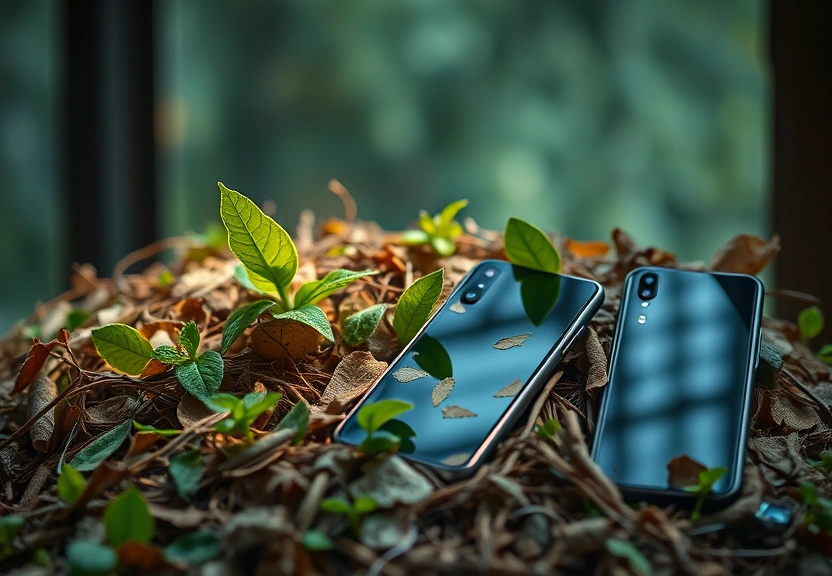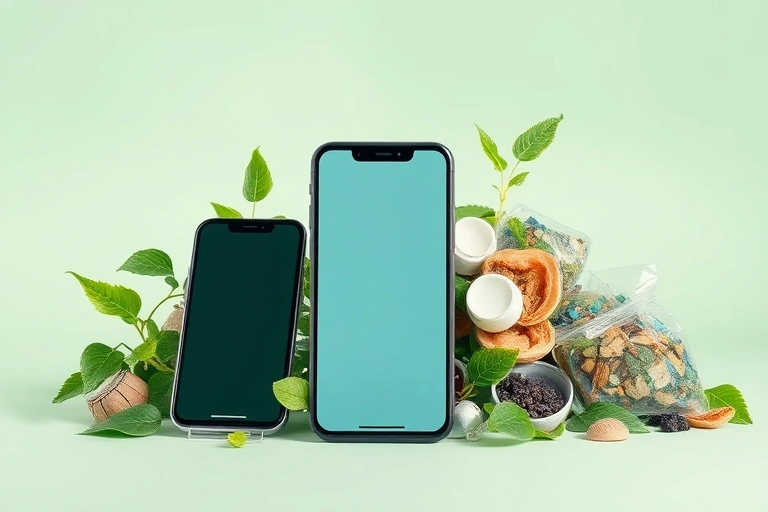Green Revolution: How 7 Sustainable Smartphones Are Saving 2.3 Million Tons of E-Waste in 2025
introduction
The rapid advancement of technology has led to an unprecedented rise in electronic waste, commonly known as e-waste. By 2025, it is estimated that the world will generate approximately 2.3 million tons of e-waste, which poses a significant environmental challenge. In response to this crisis, the concept of the green revolution has emerged, focusing on eco-friendly technology and sustainable electronics. One of the most promising aspects of this revolution is the rise of environmentally friendly phones, particularly sustainable smartphones designed to reduce e-waste significantly. This article explores how these innovative devices are paving the way for a more sustainable future.

Main Development
Sustainable smartphones have garnered attention for their design, functionality, and environmental impact. Unlike traditional smartphones, these devices are built with eco-friendly materials and are engineered for longevity. The green revolution smartphones are a crucial element in promoting sustainable practices in the electronics industry. Here, we examine seven standout models that exemplify this movement and their contributions to e-waste reduction.
- Fairphone 4: This modular smartphone is designed for easy repairs and upgrades, encouraging users to keep their devices longer, thereby reducing e-waste.
- Teracube 2e: Made with recycled materials, this phone offers a four-year warranty and a commitment to sustainability, helping users to minimize their electronic footprint.
- SHIFT6mq: With a focus on ethical sourcing and fair working conditions, this smartphone is completely modular, allowing for easy repairs and customization.
- Apple iPhone 13 (Product)RED: This model contributes to the Global Fund for HIV/AIDS programs and is made with recycled aluminum, demonstrating a commitment to sustainable practices.
- Samsung Galaxy S21 FE: Featuring sustainable packaging and a commitment to reducing carbon emissions, this smartphone is an excellent choice for environmentally conscious consumers.
- Nokia G20: This device emphasizes durability and longevity, with a promise of three years of software updates, ensuring that it remains functional for a longer period.
- Google Pixel 6a: Built with recycled materials and designed for longevity, the Pixel 6a is a perfect example of how major tech companies are adopting sustainable practices.
Each of these smartphones not only showcases a commitment to sustainability but also illustrates how eco-friendly technology can be seamlessly integrated into daily life. By prioritizing durability, repairability, and the use of recycled materials, these devices significantly contribute to reducing e-waste and promoting a more sustainable future.
🎥 Related video: Green Revolution: How 7 Sustainable Smartphones Are Saving 2.3 Million Tons of E-Waste in 2025
Analysis and Benefits
The analysis of these sustainable smartphones reveals several key benefits associated with their use. Firstly, they are designed to last longer than conventional smartphones, which often become obsolete within a few years. By extending the lifespan of devices, manufacturers help mitigate the growing problem of e-waste.
Moreover, the emphasis on repairability means that consumers can easily fix or upgrade their devices instead of discarding them. This not only saves money but also reduces the environmental impact associated with the production of new devices. The shift towards sustainable electronics fosters a culture of responsibility, encouraging consumers to make informed choices about their technology usage.
Additionally, the incorporation of recycled materials in the production of these smartphones minimizes the demand for virgin resources, which are often environmentally damaging to extract. This practice contributes to a circular economy, where materials are reused and recycled, further aiding in e-waste management and reduction.
Practical Implementation
Implementing sustainable smartphones into everyday life requires a conscious effort from both consumers and manufacturers. For consumers, the first step is to choose environmentally friendly phones that align with their values and lifestyle. Researching and understanding the sustainability practices of different brands can lead to more informed purchasing decisions.
Manufacturers play a crucial role by committing to sustainable production practices and transparency in their supply chains. By adopting sustainable manufacturing processes and emphasizing the use of recycled materials, companies can significantly reduce their carbon footprint and e-waste. Furthermore, providing consumers with easy access to repair services and spare parts ensures that devices can be maintained and used for as long as possible.
Moreover, educational initiatives aimed at raising awareness about e-waste and the importance of sustainability can empower consumers to make better choices. Workshops, online resources, and community events can help spread the word about the benefits of sustainable smartphones and eco-friendly technology.

Frequently Asked Questions
What is e-waste, and why is it a problem?
E-waste refers to discarded electronic devices, including smartphones, computers, and household appliances. It poses significant environmental challenges due to the toxic substances found in many electronics, which can leach into the soil and water, harming ecosystems and human health.
How do sustainable smartphones differ from traditional smartphones?
Sustainable smartphones are designed with a focus on longevity, repairability, and the use of recycled materials. Unlike traditional smartphones, which are often built for obsolescence, sustainable alternatives aim to reduce e-waste and promote environmentally friendly practices.
What are some benefits of using sustainable smartphones?
The benefits of using sustainable smartphones include a longer lifespan, reduced environmental impact, lower costs for repairs, and support for ethical manufacturing practices. These devices also help create a culture of sustainability among consumers.
How can consumers contribute to e-waste reduction?
Consumers can contribute to e-waste reduction by choosing sustainable smartphones, repairing their devices instead of discarding them, and recycling old electronics properly. Additionally, supporting brands that prioritize sustainability helps encourage responsible practices in the industry.
What role do manufacturers play in the green revolution?
Manufacturers play a critical role in the green revolution by adopting sustainable practices, using recycled materials, and ensuring their products are designed for longevity and repairability. By prioritizing these principles, they can significantly reduce their environmental impact and contribute to e-waste reduction.
Conclusion
The green revolution in smartphones represents a significant step towards addressing the growing e-waste crisis. With sustainable smartphones leading the charge, it is possible to save an estimated 2.3 million tons of e-waste by 2025. These devices not only demonstrate that eco-friendly technology is achievable but also inspire consumers to make conscious choices that benefit the environment. As the demand for sustainable electronics continues to grow, it is crucial for both consumers and manufacturers to collaborate in fostering a more sustainable future. By adopting practices that prioritize sustainability, we can pave the way for a greener planet.







